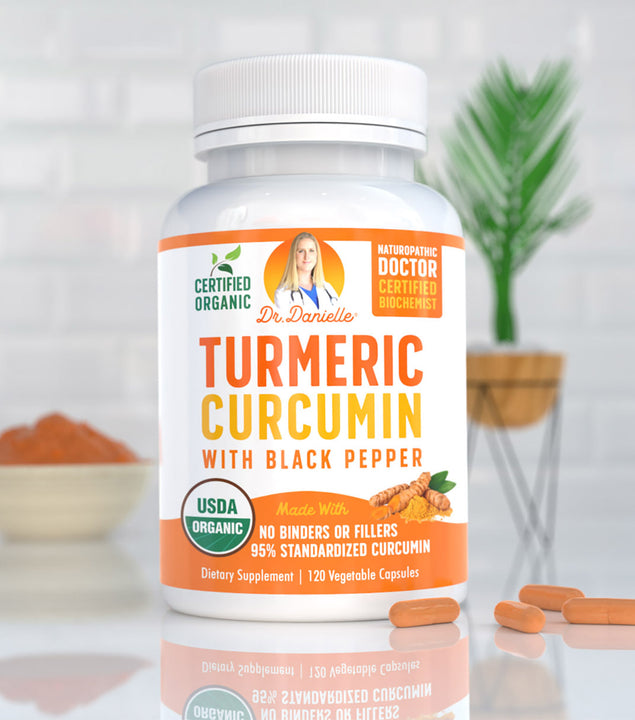You're struggling to get out of bed in the mornings. Seemingly simple daily tasks (e.g., putting on clothes, removing rings from fingers, and turning on the faucet) take so much out of you that you’re both physically and emotionally exhausted before even stepping out of the house. That’s rheumatoid arthritis for you. Unlike the wear-and-tear damage of osteoarthritis (i.e., degenerative joint disease), rheumatoid arthritis is an autoimmune disorder that occurs when your immune system mistakenly attacks your own body's tissues (1, 2). For example, the lining of your joints – thus, explaining all that stiffness and soreness you experience.
Good news? With the right rheumatoid arthritis management plan (i.e., medications and smart lifestyle modifications), you can find relief from this inflammatory illness, potentially even reaching a place where your symptoms are extremely minimal or entirely non-existent. Below, find a few management tips that may help you achieve that goal.
#1: Keep stress levels low
Given that rheumatoid arthritis is an inflammatory condition at its core, it isn't surprising to find out that stress exacerbates rheumatoid arthritis (3). As to the underlying mechanism? Well, it comes down to the fact that stress makes your body release more of something called cytokines – which play a role in the cascading process that leads to inflammation and, in turn, increased discomfort (4, 5, 6). As such, if you have rheumatoid arthritis, one of the best things you can do is learn how to keep your stress response in check (because while you can't avoid stressful events altogether, you can control your reaction to them).
How, though? One word: meditation. Studies consistently show that meditating regularly can help people cope with rheumatoid arthritis symptoms – so much so that rheumatologists now recommend mindfulness meditation to patients with arthritis (7, 8)! In addition to making time for meditation, you can also consider adding stress-relieving supplements, like Dr. Danielle’s Stress Lift (formulated with ashwagandha), to your daily routine.
#2: Be thoughtful about your choice of movement
Don't let the pain of dealing with rheumatoid arthritis keep you from staying physically active. Research shows that exercise helps relieve symptoms and improve day-to-day functioning by reducing fatigue and preventing loss of muscle mass and bone density (which the condition normally accelerates) (9, 10, 11, 12). Better still: exercise can also help prevent chronic diseases like heart disease and diabetes, which often develop alongside rheumatoid arthritis. That said, you shouldn't jump right into an intense workout routine. Pushing your body too hard too fast runs the risk of additional swelling and pain. Go slow.
Start with low-impact exercise, like walking, swimming, and Pilates – only gradually upping the intensity when you get a better grasp on what your body can (or cannot) tolerate. Worried that all forms of exercise (no matter how low in intensity) will send your rheumatoid arthritis symptoms into overdrive? While your concerns aren’t unfounded, perhaps supplementing with turmeric (e.g., Dr. Danielle’s Turmeric Curcumin) – which contains curcumin, known to exert potent anti-inflammatory properties – could help. Take this 2017 study, for instance (13). The researchers found that participants (with rheumatoid arthritis) who took curcumin reported significant improvements in their pain and inflammation compared with those in the placebo group.
#3: Avoid foods that increase inflammation
Here’s a disclaimer. There’s no specific diet that’ll “cure” rheumatoid arthritis. With that said, research has now made it clear that certain foods can indeed increase inflammation in the body – which, imaginably, would further worsen rheumatoid arthritis symptoms (14, 15, 16, 17, 18). Meaning? You’d do best by cutting down your intake of these “pro-inflammatory” foods, including high-fructose corn syrup (HFCS), artificial trans fats, refined carbohydrates, excessive alcohol, and processed meat (in particular, those cooked at high temperatures). At the same time, you should also strive to increase your intake of foods that fight inflammation.
Pay special attention to fruits and vegetables, such as strawberries, cherries, and leafy greens, high in natural antioxidants and polyphenols – protective compounds found in plants (19). Oh, and don't forget about mushrooms! They're known to be rich in antioxidants, such as selenium and ergothioneine, which are both powerful anti-inflammatory compounds. Varieties of mushrooms to look out for include cordyceps, lion's mane, and reishi (20, 21, 23). Does your neighborhood grocery store only carry canned button mushrooms? Don’t know how to add mushrooms into your diet? Dr. Danielle’s Mushroom Complex has you covered. Psst: it contains 8 different types of mushrooms!
#4: Build a support system
Dealing with the pain of rheumatoid arthritis can take a toll on your mental health. Not only can the discomfort impact your mood, but having to turn down social plans and miss out on things can also worsen feelings of isolation and alienation – potentially leading to depression and anxiety (which are commonly seen with painful chronic illnesses like rheumatoid arthritis) (24, 25). Thus, highlighting the importance of having a support system you can fall back on. So … don't underestimate how helpful it might be to reach out to friends and family. Even if they don't understand what you're experiencing daily, they can be empathetic and supportive.
You could even come up with specific ideas for how they can help you carry out certain tasks you find challenging. For example, if you love cooking but have a hard time chopping up ingredients, then you might ask your partner to do this for you. And if you can, do consider seeing a therapist or counselor – especially if you don’t have friends or family you can talk to. A mental health professional can help you process, and learn how to deal with, some of the negative feelings you experience living with rheumatoid arthritis.
#4: Take care of your gut health
What does gut bacteria have to do with rheumatoid arthritis, you ask? Well, recent research suggests this: everything. According to a 2016 study published in Genome Medicine, individuals with rheumatoid arthritis were found to have less gut diversity than disease-free people (26). Other studies also show that people with rheumatoid arthritis tend to have high levels of “bad” gut bacteria (e.g., the Prevotella copri strain), which appears to "crowd out" beneficial microbiota that fights inflammation (27). Interestingly, emerging research suggests that these “bad” bacteria might play a part in initiating rheumatoid arthritis by damaging the lining of the gut (i.e., becoming “leaky”) – potentially allowing the passage of bacteria to cross into the body, enhancing inflammation both in the gut and in the joints (28).
As such, scientists now believe that the intestinal lining may be a suitable therapeutic target for treating rheumatoid arthritis. One thing's clear. If the scientists are on the right track … you can be sure that you'd never experience long-lasting relief from your rheumatoid arthritis symptoms if you don't address your gut health. And to do that, you’ll need to take a two-pronged approach: first by increasing the “good” gut bacteria, and second, by healing your “leaky gut”. Feeling overwhelmed? Don’t be. Pairing Dr. Danielle’s Probiotics with the Gut Assist helps you do both easily.
#6: Stay in open communication with your healthcare providers
Individuals with rheumatoid arthritis most commonly see the most remarkable improvements in symptoms through a combination of medications and lifestyle modifications (i.e., all the points mentioned above). So, if you're still struggling with debilitating pain despite tweaking your lifestyle, consider approaching a doctor for specialized help. To further convince you: clinical studies indicate that remission of symptoms is more likely when treatment begins early with medications known as disease-modifying antirheumatic drugs (DMARDs) (29, 30, 31, 32). Of course, the types of medications recommended by your healthcare provider will depend on the severity of your symptoms – and how long you've had rheumatoid arthritis.
In general, though, the medications commonly used to treat rheumatoid arthritis are biologics, DMARDs, NSAIDs, and corticosteroids. And if you find even low-impact exercise to be a challenge, your doctor may also refer you to an occupational therapist who can teach you "special" exercises to help keep your joints flexible. Surgery is only a last-measure resort to repair damaged joints if medications fail to prevent or slow disease progression.
Remission is possible with rheumatoid arthritis

The bodily pain that comes with rheumatoid arthritis can make you feel like pulling your hair out sometimes. But in these difficult instances, it's worth remembering that remission is entirely possible with rheumatoid arthritis. Find that hard to believe? Well, statistics don't lie; according to the American College of Rheumatology, somewhere between 10% to 20% of individuals living with rheumatoid arthritis can reach remission (33). Better still: a much larger group (as much as 50% or maybe even 70%) achieve a state of low disease activity – which means they still deal with symptoms, but they’re much less severe than when the disease was more active.
Have faith. Sure, there are extra challenges that come with living with rheumatoid arthritis. But as you’ve seen in this article, a combination of lifestyle changes and medicinal treatments can help relieve pain, slow down or stop joint damage, and let you lead a fully functional life.








